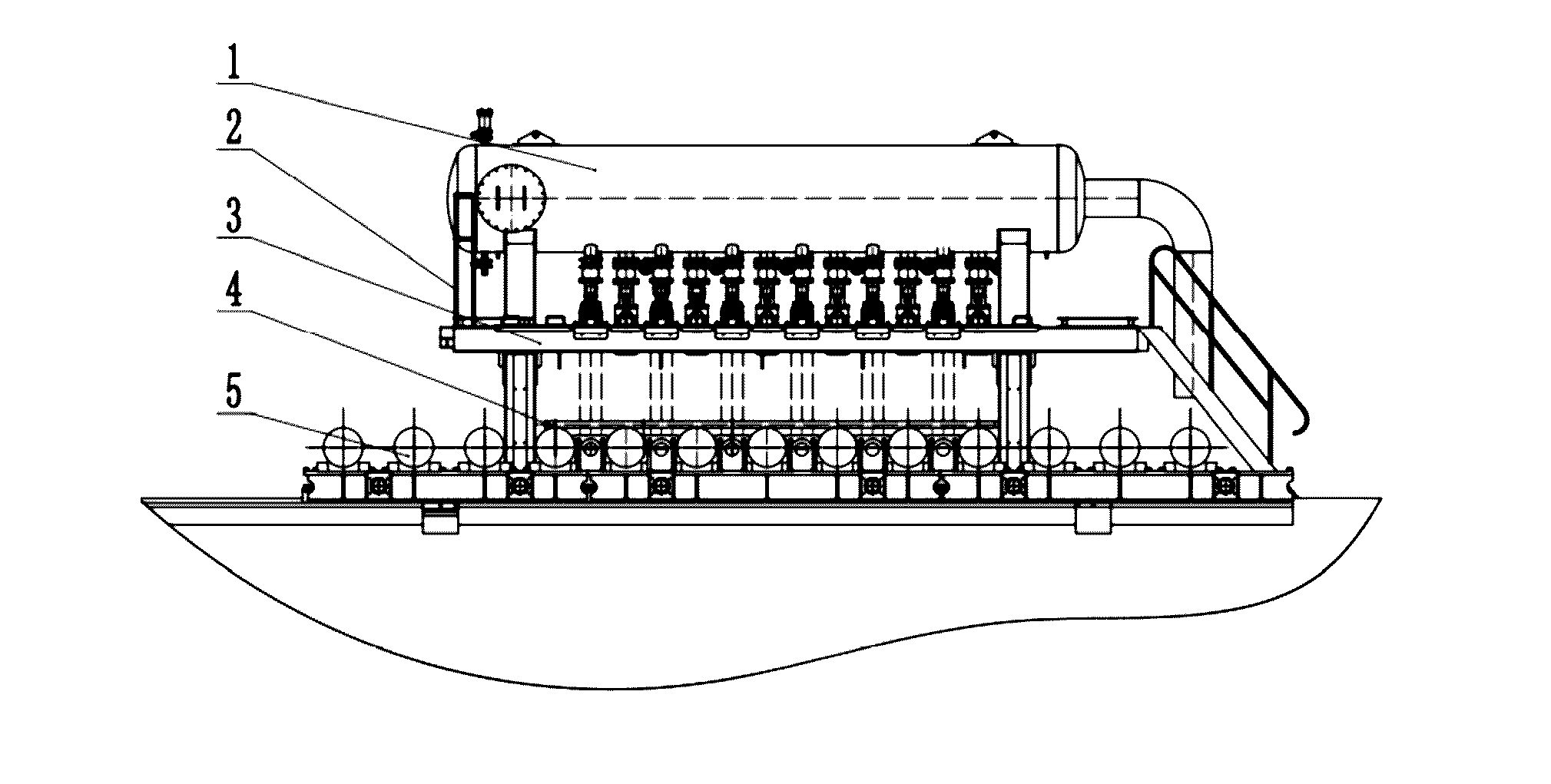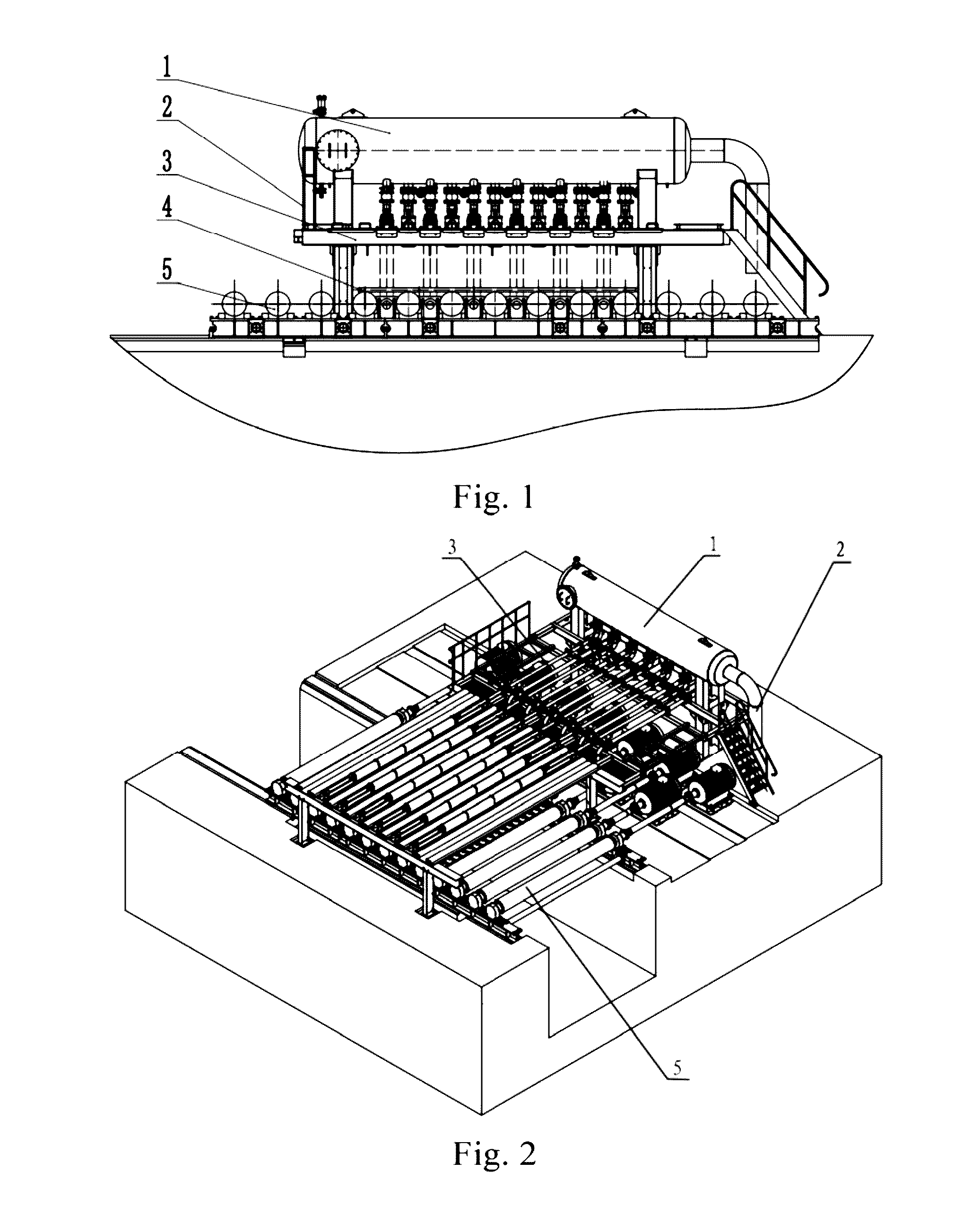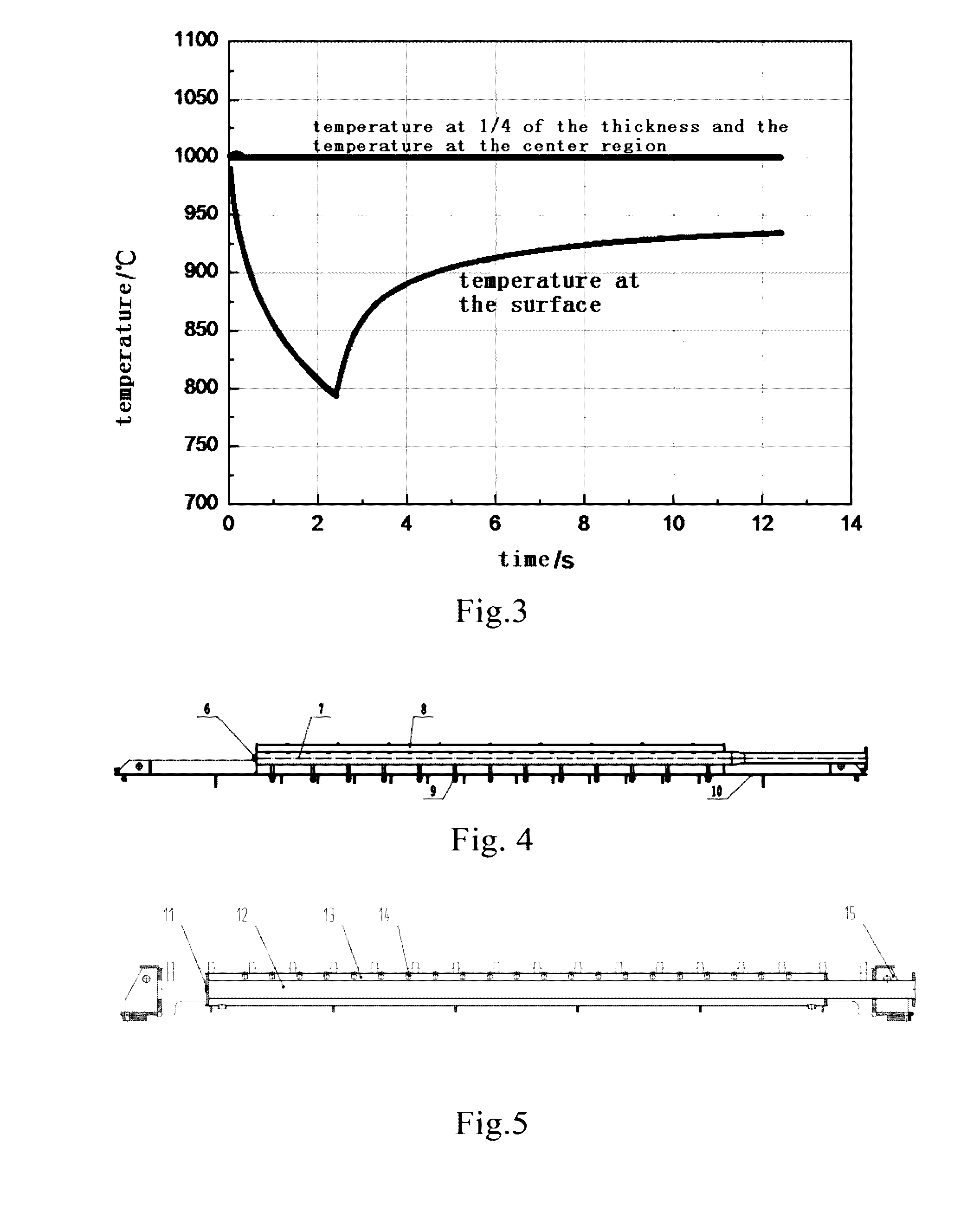Cooling method and on-line cooling system for controlled rolling with inter-pass cooling process
a cooling system and control technology, applied in the field of controlled cooling, can solve the problems of low yield, poor homogeneity of microstructure and structure, low productivity, etc., and achieve the effect of reducing the temperature gradient in the length and width directions and good temperature homogeneity of the entire pla
- Summary
- Abstract
- Description
- Claims
- Application Information
AI Technical Summary
Benefits of technology
Problems solved by technology
Method used
Image
Examples
embodiment 1
[0094]Rough rolling and finish rolling can be integrated when the finishing temperature of rough rolling is low.
[0095]150 mm thick continuous casting is used in this embodiment of the present invention, and the chemical composition of the continuous casting is shown in table 1. The continuous casting is heated to 1200° C. and held for 120 minutes in order to acquire complete austenite in the plate, then the first stage rolling would be started when the temperature of the continuous casting dropped to 1100° C.
[0096]In the first stage, the continuous casting is cooled by the nearest inter-pass cooling group, then goes through the roller without deformation, and continues to be cooled when it exits from the roller by the cooling system arranged on the other side of the rolling mill. Afterwards, the casting is cooled for the third time when entering the roller, maximum water flow is used for all three cooling process, and the cooling rate of the surface layer is larger than 15° C. / s all...
embodiment 2
[0099]When the finishing temperature of rough rolling is high, the cooling process of the intermediate slab can be repeated between rough rolling and finish rolling.
[0100]150 mm thick continuous casting is used in this embodiment. The continuous casting is heated to 1200° C. and held for 120 minutes, after that the plate is rolled successively in the recrystallization region with the pass reduction of 20-25 mm. High strength inter-pass cooling is used for the steel plate as the plate enters and exits from the rollers, the cooling rate is higher than 15° C. / s. The finishing temperature of rough rolling is 1030° C. and the thickness of the intermediate slab is 90 mm. Afterwards, successive reciprocating cooling is carried out using the inter-pass cooling equipment beside the rolling mill until the temperature of the plate 4 is dropped to 950° C.
[0101]During finish rolling, the pass reduction is reduced to 13-15 mm. The plate surface is cooled to 500-600° C. firstly, then re-reddened t...
embodiment 3
[0104]When the plate cannot be cooled to the expected temperature in single pass cooling, a reciprocating inter-pass cooling process can be used during pass until the temperature of the plate meets the requirement.
[0105]In this embodiment of the present invention, the plate 4 is rolled successively in the high temperature region and then cooled by UFC (ultra fast cooling) equipment.
[0106]150 mm thick continuous casting is used in this embodiment of the present invention. The continuous casting is heated to 1200° C. and held for 120 minutes, subsequently the temperature of the continuous casting is dropped to 1150° C. In the first stage, the plate is rolled successively with the pass reduction of 20-25 mm, while thrice an inter-pass cooling process is carried out before every rolling pass. The surface temperature is kept at 900-950° C. by the adjustment of water amount, cooling strength, cooling rate, roller speed and in combination with the temperature detection system before every ...
PUM
| Property | Measurement | Unit |
|---|---|---|
| diameter | aaaaa | aaaaa |
| diameter | aaaaa | aaaaa |
| diameter | aaaaa | aaaaa |
Abstract
Description
Claims
Application Information
 Login to View More
Login to View More - R&D
- Intellectual Property
- Life Sciences
- Materials
- Tech Scout
- Unparalleled Data Quality
- Higher Quality Content
- 60% Fewer Hallucinations
Browse by: Latest US Patents, China's latest patents, Technical Efficacy Thesaurus, Application Domain, Technology Topic, Popular Technical Reports.
© 2025 PatSnap. All rights reserved.Legal|Privacy policy|Modern Slavery Act Transparency Statement|Sitemap|About US| Contact US: help@patsnap.com



